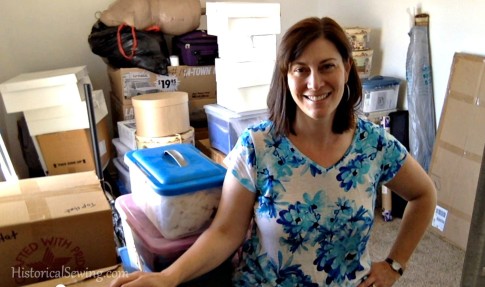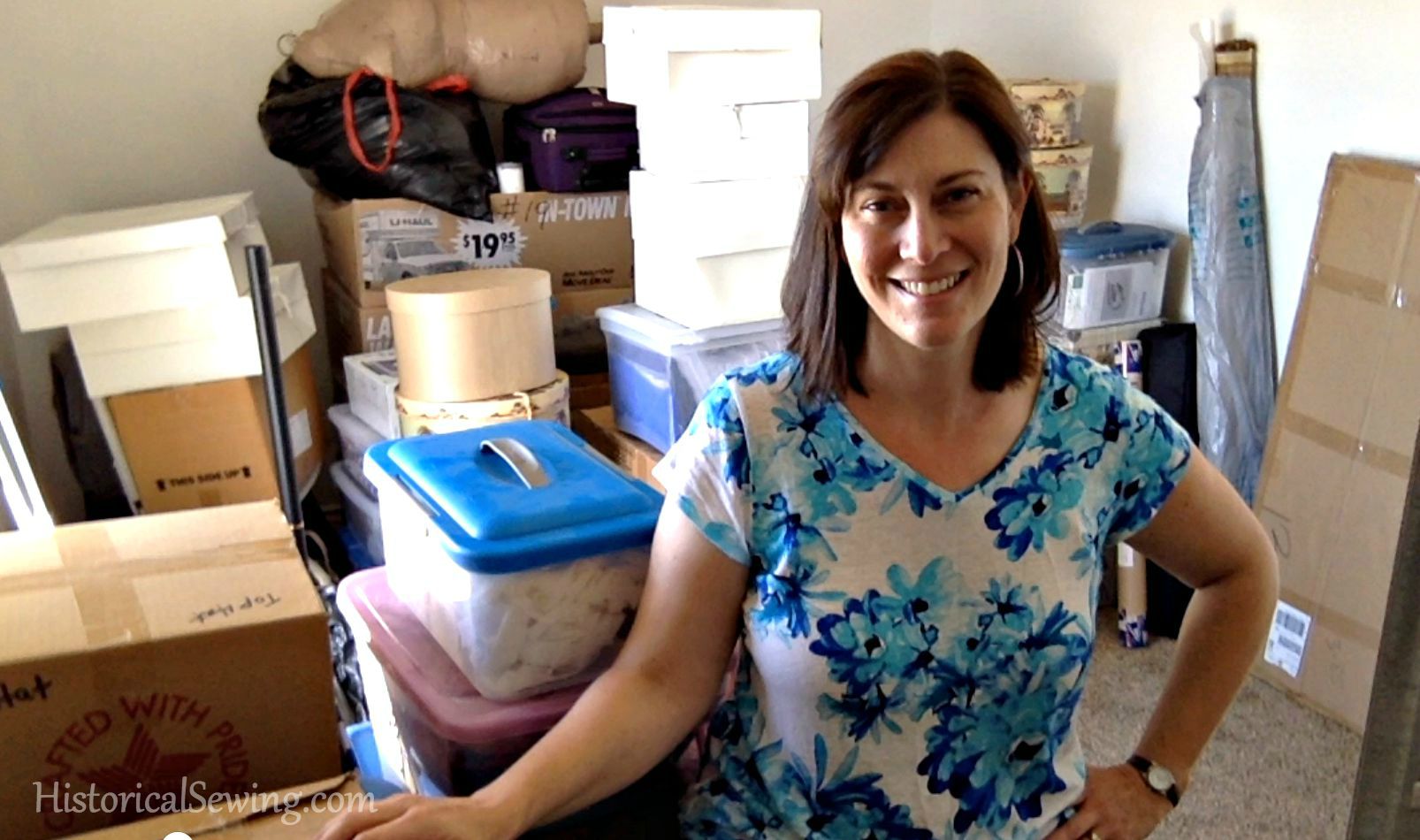
Hello my friends!!
I’m back from the adventure of moving 700 miles to a new home. I’m now in Utah about a half hour south of Salt Lake City. If you are in the area and know of dress-up or reenacting events please let me know. I want to join the fun and meet you in person! 🙂
A quick post today for those who want to try a new time period and don’t know where to start researching. Welcome to my (still unpacked) sewing room for three tips on how to go about delving into a new era. Watch the video below:
Any other tips you might add when you very first start researching a new decade for sewing?


Congratulations on your move. I hope you are enjoying your new home and neighborhood as you unpack and settle in. Thanks for the video. I will add to your tip – use your public library. It is a great way of getting resources and really looking at things in detail. Not to poo-poo the internet but sometimes I find really great information in books so I can go to my friends who are super experienced at creating period outfits with my questions. Another bonus of using the library is you get to know the librarians who can give you heads up about new books. Because of your blog I am working on my first set of stays – 18th century stays. I am going really slow with the mock up because I want to get it right. Keep up the good work.
Great tip! Yep – have already looked into getting a card at the city library. 🙂
Good luck on your stays!
Hi, I am trying to find a dress for a Regency Masquerade Ball occurring next month in West Jordan (by SLC) and a search turned up your page. When I saw this post, I thought you’d want to know about the Old Glory Vintage Dancers. http://www.oldgloryvintagedancers.com/
Oh, awesome! Perhaps I will see you there!
One suggestion I have is when researching a new fashion era, concentrate more on images of extant garments (actual clothing that has been preserved and survived) and not as much on fashion plates.
When I started, the appeal of fashion plates was strong and the images were easy to find. What I didn’t realize is that the “cutting edge” fashion shown in those pages didn’t necessarily reflect what was seen in everyday life. It’s the difference between what’s on the runway in Paris or Milan versus what is worn by the bulk of the population. Sure they’re fun and great for inspiration, but when first starting I think one learns more (and best) by sticking with the basics of fashion as it was really worn and building from there.
I’ve made the mistake of starting a new era by trying to replicate something fancy or exotic, only to fail in so many ways and end up frustrated. Now I try to avoid repeating that mistake as best I can. My pearl of wisdom to offer: Be nice to yourself and start with something that will not only succeed but also bolster your enthusiasm for your “new” era. 🙂
Wise words indeed! And yes – fashion plates represented the top 2% of styles and were mainly for inspiration for the “rest of us” to pull ideas from for our own clothing projects. 🙂
That’s a good tip. Are photographs from museum collections a good option? I’ll have to look into it…
Oh, yes! But remember that “photoshop” treatments were done on some photos. Also, people would dress in their best – usually – for photos so it may not represent those person’s every day dress. Joan Severa’s books are *fantastic* for period research.
Jennifer! Let’s meet! I’m about a half hour north of Salt Lake City, but down in that area all time time and would love to converse with someone else who loves historical sewing as much as I do. I sent you an email with contact info. Feel free anytime. 🙂
Sounds good! 🙂
This is a little of the track but could you do some info on mens clothing. I have made some companion clothes for my guy but am not as comfortable with tailoring . This would also be helpful for later Victorian jackets as well. I love all your teaching it has been a big help.
Classes are in the works and pre-planning stages!
Do you have any advice on sewing patterns for bigger and taller gentleman?I’ve looked at the Laughing Moon patterns for gentlemen, but my human teddy bear is outside the top end of their size range by a few good inches.
I don’t have much experience for sewing for larger men (my husband is on the short end). Piecing at the sides or adding additional panels will help. Make a mockup up then slice and add where needed to get the fabric to cover where it needs to.
I CANNOT believe this! I’ve been silently stalking *ahem* admiring you and your work from afar for years…….and JUST as I am moving from SLC, here you are!
I am on my phone and am having trouble forwarding links, but I know plenty of costumey people and event to throw in your direction!
Oh!! If you come back to visit please message me. 🙂
I live in the west side of SLC metro! I would totally love to meet you in person someday!
Totally!
Just curious, why did you flip the video?
Haha! That’s what my husband asked too. I forgot to flip it from mirror before recording. First time use of the new app. 🙂
No one said you had to be perfect all the time. 😉 Congratulations on the move by the way!